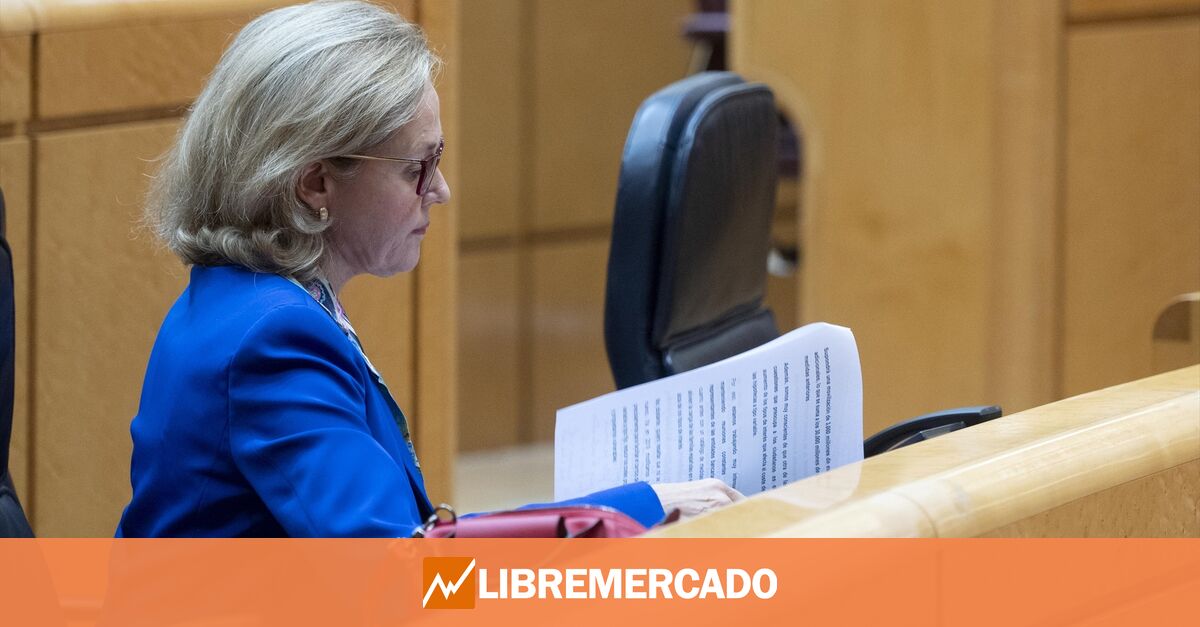The Government has returned to demagoguery with mortgages and has done so, in a hurry, with night and trying to divert attention on the controversies that rage against the Executive, thanks to the modification of the crime of sedition and the famous law of the only yes is yes that gets rapists out of jail.
Something had to be announced and done quickly and Calviño pressed the accelerator to impose a minimum agreement on bank employers, which not all the large entities have yet signed up to: The announced objective: to alleviate the sharp increase in mortgages due to the increase in the Euribor to the middle and lower classes. However, the small print of the measures presented is far removed from the reality of the Calvino’s propaganda goal.
Measures
Amendment of the Code of Practice for Vulnerable Families
These measures are aimed at families who earn less than 24,300 euros a year and for which the mortgage payment represents 50% of their income. The measurements are:
- Five-year grace period on loan principal
- Interest on capital decreased from Euribor +0.25% to Euribor +0.1%
- The loan term can be extended up to 7 years
- They can restructure loans on more than one occasion
- It allows payment in kind, but is extended from 12 to 24 months from the date of submission of the application.
Creation of a new Code of Practice for Middle Class Families
These measures are aimed at families who earn less than 29,400 euros a year, whose mortgage represents more than 30% of disposable income and for which the change in the Euribor has led to a rent increase of 20% or more. The measurements are:
- One year grace period on loan principal
- Main interest lower than the market average
- The loan term can be extended up to 7 years
Complementary measures for all families
- Fees are eliminated to facilitate the conversion from variable to fixed mortgage in 2023
- Fixed conversion cost reduced from 0.15% to 0.05%
- Fees are eliminated to encourage early depreciation
- The Bank of Spain is entrusted with a guide with all the measures
the fine print
So far the measures announced by Calvino. Now, let’s look at the fine print. According to Calvino, these measures will also help the middle classes. Is a family that has a gross annual income of 30,000 euros a year a high-ranking family? This is one of the problems with the classification of measures by wage ranges, that the line dividing the measure leaves out most of the Spanish middle class. In addition, there are 4 million Spaniards whose salary range it fluctuates between 30,000 and 60,000 euros per yearthat we could openly consider the Spanish middle class.
In other words, not only is Calviño lying when he says that these are measures that will relieve the middle class, but he no less than 4 million consumers.
Mortgages are getting more expensive
Furthermore, measures relating to mortgage grace periods could make loans more expensive mortgages up to 10,000 eurosaccording to the calculations of a real estate portal specializing in the search for mortgage loans (iAhorro).
The specialists also point out that the only one of the measures adopted which could offer some benefit is the reduction of the interest rate to -0.1%. Everything else was already covered
Grace periods and extended credit life will have a negative effect on the price. These two measures will make credit significantly more expensive and ultimately cause the customer to end up paying more. High amounts, depending on each of the loans.


